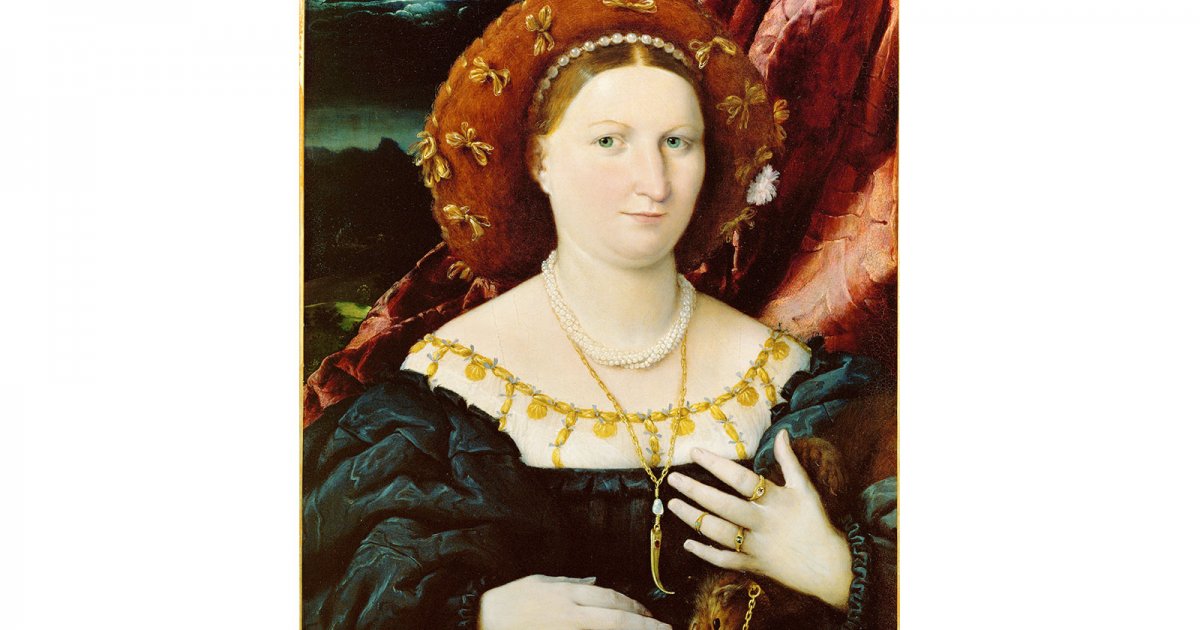ACCADEMIA CARRARA, Hall 10
 Language: English / USA
Language: English / USA
In this room, I suggest you stop to admire the portrait of “Lucina Brembati”, a close-up of a female figure of early-sixteenth-century Bergamo, painted by the great Venetian Renaissance painter Lorenzo Lotto between 1521 and 1523.
The precious jewels she is adorned with exalt the self-esteem of the subject, portrayed in a realistic manner, with an asymmetrical face, heavy chin and sharp expression. The noblewoman is wearing a headdress known as a capigliara, made of fabric, pearls and imitation hair. It was very fashionable at the time because it was always worn by Isabella d’Este, one of the most influential women of the Renaissance.
To discover the name of the noblewoman in the painting, there is a rebus to solve. Look carefully at the moon (luna in Italian) that lights up the night sky: written above it are the letters C and I. If you place these two letters in the middle of luna, it reads LuCIna!
The work I suggest you take a look at is another painting by Lorenzo Lotto: “Nozze mistiche di Santa Caterina” (The Mystical Marriage of Saint Catherine).
It was painted in 1523 for the merchant from Bergamo Niccolò Bonghi, the man in sixteenth-century dress on the left side of the painting, characterized by the impressively bright colors of the central group, marked by a certain restlessness. The scene shows the symbolic marriage between Jesus, who as you can see is handing over a ring, and Saint Catherine of Alexandria, who died a martyr because she refused to marry, saying she was already married to Christ.
Let’s now take a look at the painting entitled “Ritratto di gentiluomo” (Portrait of a Gentleman), by Altobello Melone from Cremona.
You’ll see an attractive, pensive young man, dressed in the latest fashion, as a storm is brewing in the background and other figures are passing by.
The man gripping a dagger as he looks into the distance was once believed to be Cesare Borgia, the illegitimate son of Pope Alexander VI.
An interesting fact: in place of the gray part in the painting Nozze mistiche di santa Caterina, there was once a window through which a passage on Mount Sinai was visible. It seems – although this is not certain – that during a siege by the French, the painting, which was hidden in the Church of San Michele, was found by a soldier, who cut away the part in question.



